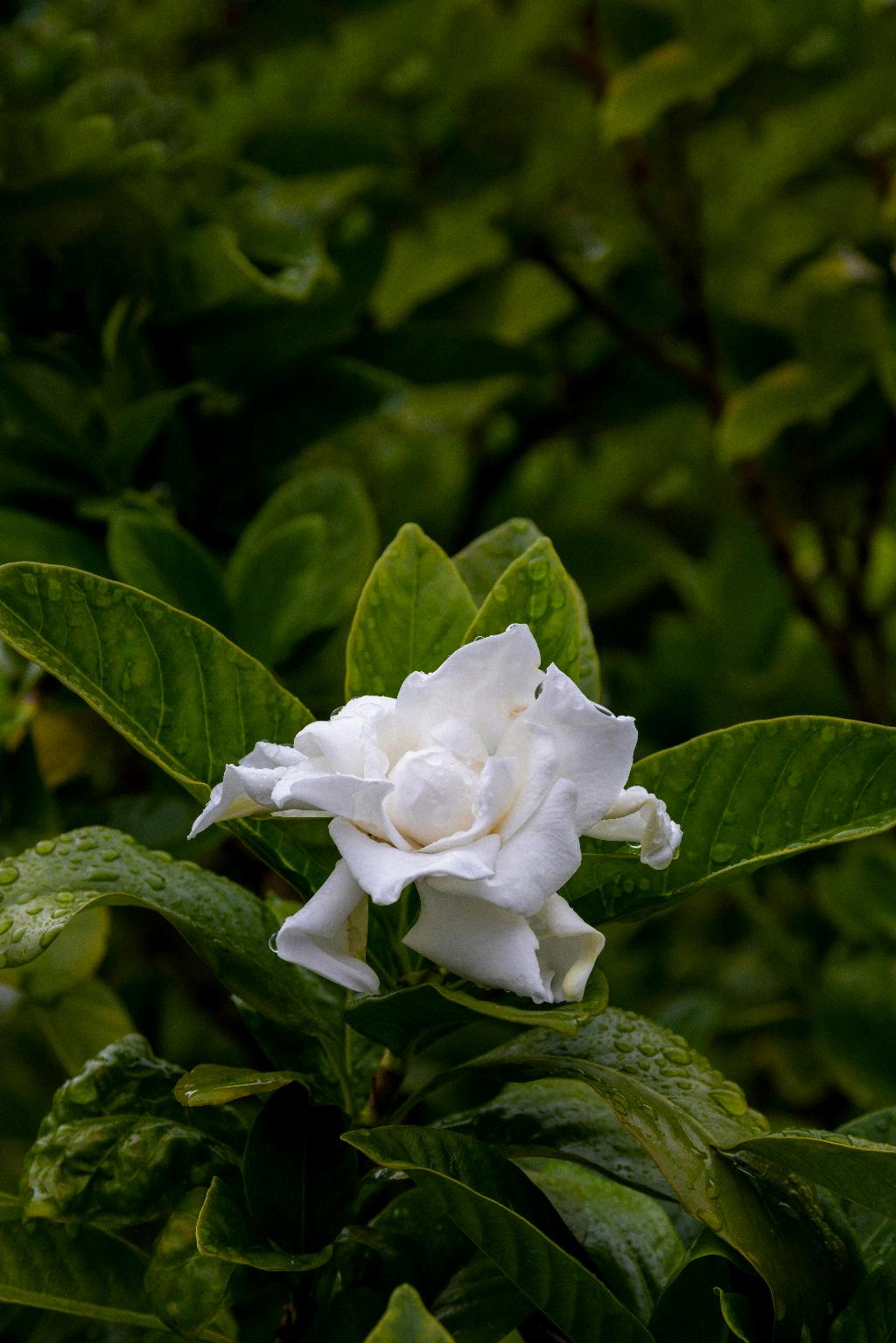One of the most common reasons for Gardenia leaves turning brown and crispy is low humidity. Gardenias thrive in high humidity environments, so if your plant isn’t getting enough moisture in the air, the leaves may start to dry out and turn brown. To combat this issue, it’s essential to increase the humidity around your plant by misting the leaves daily, placing the plant on a tray of moist pebbles, or using a humidifier to create a more suitable environment for your Gardenia.
Too Much Direct Sunlight
Another possible cause of brown and crispy Gardenia leaves is too much direct sunlight. While Gardenias do need bright, indirect light to grow well, excessive exposure to direct sunlight can scorch the leaves, leading to browning and crisping. If your plant is located in a spot with intense sunlight, consider moving it to a more shaded area to protect the leaves from burning.
Improper Watering
Incorrect watering practices can also contribute to Gardenia leaves turning brown and crispy. Overwatering or underwatering your plant can stress it out, causing the leaves to dry out and develop brown spots. Make sure to water your Gardenia consistently, allowing the soil to dry out slightly between waterings but ensuring it doesn’t become completely dry. Additionally, using filtered or distilled water can help prevent mineral buildup in the soil, which can harm your plant.
Poor Soil Quality
The quality of the soil your Gardenia is planted in can have a significant impact on the health of the plant. If the soil is too compacted, drains poorly, or lacks essential nutrients, it can result in nutrient deficiencies and root rot, both of which can cause the leaves to turn brown and crispy. Ensure your Gardenia is planted in well-draining, acidic soil rich in organic matter to support healthy growth and prevent issues with the leaves.
Pest Infestation
Pests such as aphids, mealybugs, and spider mites can also be responsible for Gardenia leaves browning and crisping. These tiny insects feed on the plant’s sap, weakening it and causing damage to the leaves. Check your Gardenia regularly for any signs of pest infestations, such as small insects, webbing, or sticky residue on the leaves. If pests are present, treat the plant with insecticidal soap or neem oil to eliminate them and prevent further damage.
Improper Fertilization
Overfertilizing or using the wrong type of fertilizer can also lead to issues with Gardenia leaves, including browning and crisping. Gardenias are sensitive to excess salts and chemicals in fertilizers, so it’s crucial to use a balanced, acid-loving plant fertilizer at half strength every 4-6 weeks during the growing season. Avoid fertilizing in the winter months when the plant is dormant to prevent nutrient buildup and leaf damage.
Temperature Fluctuations
Gardenias are sensitive to temperature fluctuations, especially drastic changes in temperature. Exposure to cold drafts, sudden drops in temperature, or prolonged exposure to extreme heat can stress the plant and cause the leaves to turn brown and crispy. To protect your Gardenia from temperature-related issues, keep it away from drafty windows or doors, maintain a consistent room temperature, and avoid placing the plant near heating or cooling vents.
Root Rot
Root rot, caused by overwatering or poorly draining soil, can also result in brown and crispy Gardenia leaves. When the roots of the plant become waterlogged and deprived of oxygen, they start to rot, affecting the plant’s ability to take up water and nutrients. To prevent root rot, make sure your Gardenia is planted in well-draining soil, and only water the plant when the top inch of the soil feels dry to the touch.
Disease
Fungal diseases such as powdery mildew and sooty mold can infect Gardenias, causing the leaves to develop brown patches and become crispy. These diseases thrive in humid conditions and can spread rapidly if not treated promptly. If you suspect your Gardenia is suffering from a fungal infection, remove the affected leaves, improve air circulation around the plant, and treat it with a fungicide to prevent the disease from spreading.
Inadequate Light
While Gardenias need bright, indirect light to grow and bloom, insufficient light can also lead to issues with the leaves, including browning and crisping. If your plant is not receiving enough light, it may not be able to photosynthesize properly and produce energy, resulting in weakened, discolored leaves. Place your Gardenia in a location where it receives at least 6-8 hours of bright, indirect sunlight each day to promote healthy growth and prevent leaf problems.
Transplant Shock
Transplanting your Gardenia into a new pot or location can sometimes cause stress to the plant, leading to leaf browning and crisping. When roots are disturbed during transplanting, the plant may struggle to uptake water and nutrients, resulting in damage to the leaves. To minimize transplant shock, be gentle when repotting your Gardenia, ensure it has adequate soil and water after transplanting, and place it in a location that meets its light and humidity requirements.
Air Circulation
Poor air circulation around your Gardenia plant can also contribute to issues with the leaves, such as browning and crisping. Stagnant air can create a favorable environment for pests and diseases to thrive, impacting the overall health of the plant. To improve air circulation, place a fan near your Gardenia to promote airflow, avoid overcrowding the plant with other foliage, and periodically prune any overcrowded or dead branches to maintain a healthy growing environment.

